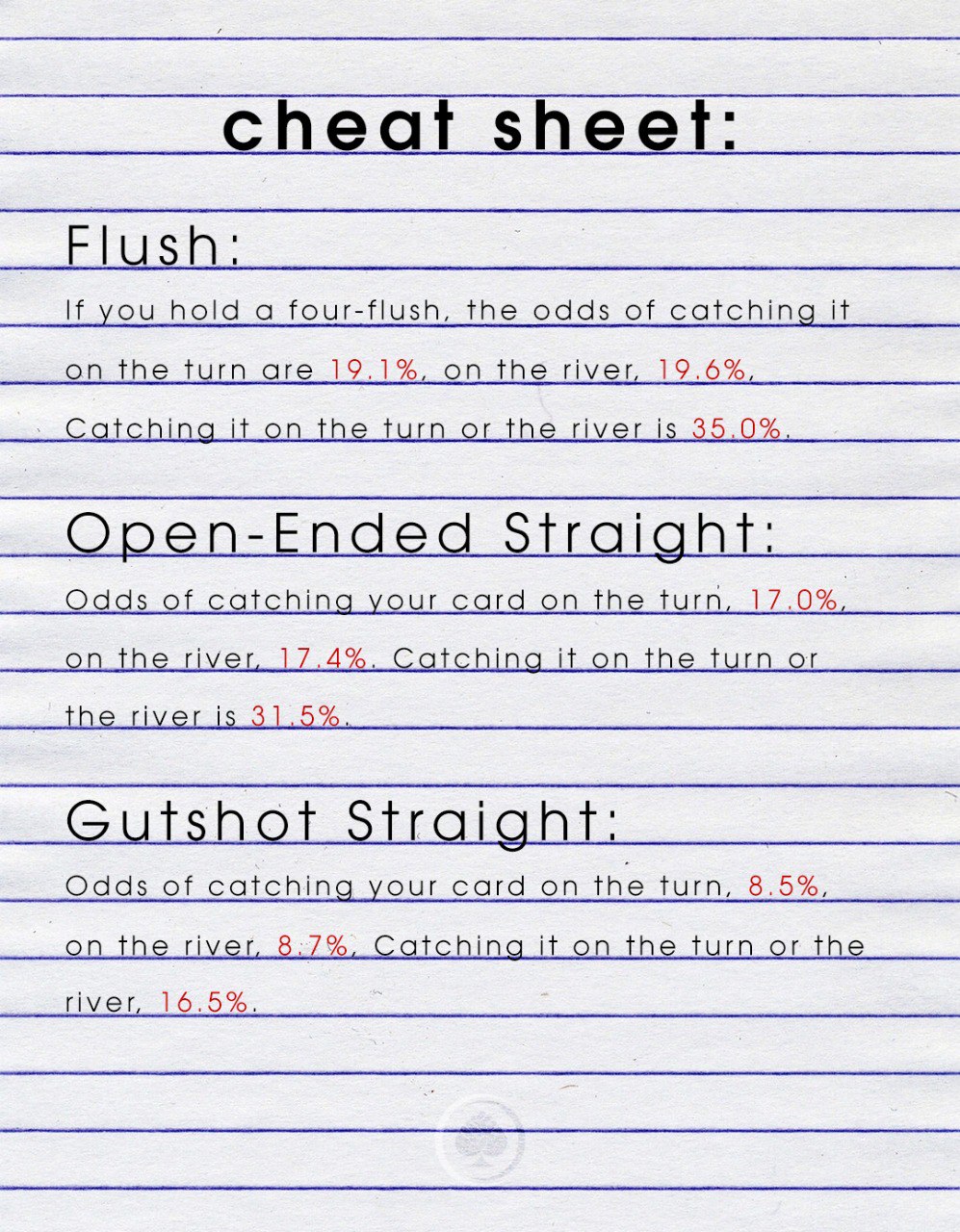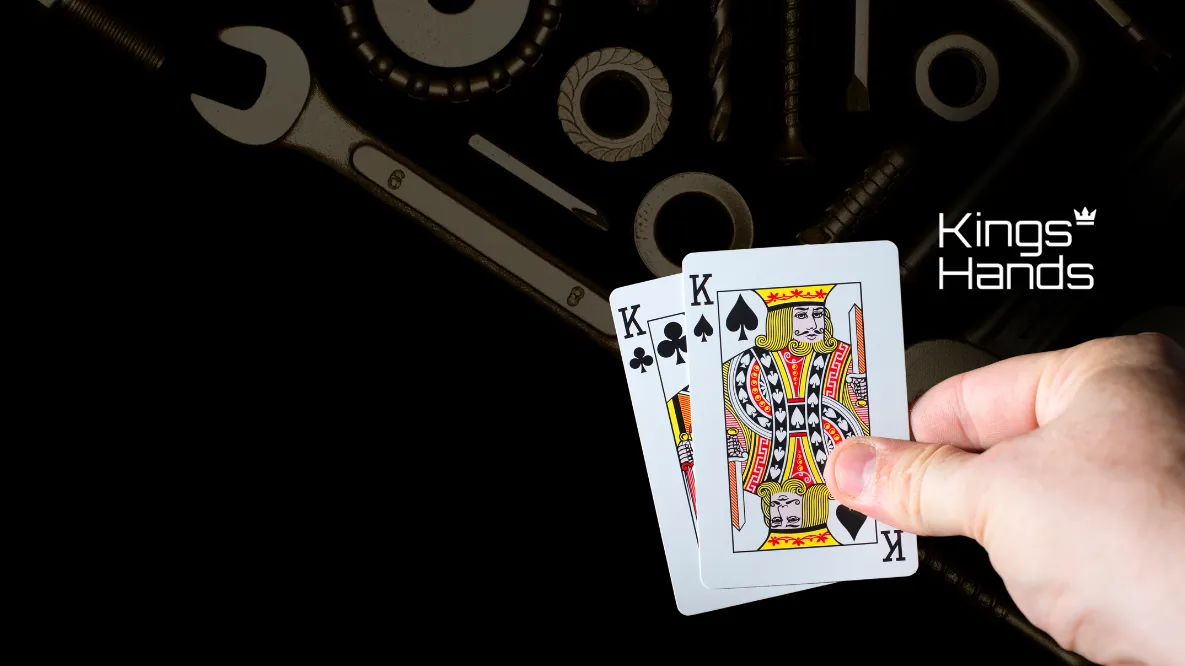When people think of poker math, they don’t often think of implied odds. Many people consider implied odds as an estimate or even a guess as to what will happen on later streets, but there is a mathematical formula you can use to determine the best course of action. In this article, we’ll be looking at exactly what implied odds are, how to use them, and much more!
What Are Implied Odds?
Implied odds are a way of determining whether or not a call can be profitable in the future, even if you don’t have the direct odds to call. As we covered in previous articles, you’ll find that in some situations, you don’t have the direct odds to call and try and improve your hand. However, if you do make your hand, you stand to win a much bigger pot on later streets, so it could be worth it to make a “bad” call on the flop knowing that if you make your hand, you’ll be compensated for it.
Many players in this situation just try and guess whether or not they’ll make enough on later streets before making the call. The best poker players use the implied odds formula to calculate exactly how much they need to make from their opponents for the call to break even and use their hand-reading skills to determine whether or not it’s likely to happen.
How Are Implied Odds Different From Pot Odds?
While the names of these two poker math concepts are similar, they cover different parts of the decision-making process. Pot odds help you determine how much equity you need to make a profitable call on a given street. For example, if you have a flush draw on the flop and you’re facing a bet from your opponent, you can use pot odds in conjunction with poker probability to determine whether or not the call will be profitable.
On the other hand, implied odds help you determine how much you need to make on future streets to make what would be an unprofitable call profitable. In the same example where you have a flush draw on the flop, your opponent may not give you the right odds to draw to your flush, but if you think you’re going to make enough on later streets, then you can profitably make the call.
How Do Implied Odds Work?
Many players just try and guess whether or not they’ll make enough on later streets to justify a call. While part of it requires you to consider how the action plays out on later streets, you can work out mathematically how much you need to make on later streets for a call to be profitable.
While many people use implied odds as a carte blanche to make any call they like with the expectation they’ll make it back on later streets, there is a formula you can use to mathematically determine how much money you need to make for your call to be profitable.
Let’s take a look at that equation below.
Implied odds = ((1/Chance you improve) * How much to call) – (Pot Size + Call Size)
While it may look scary, it’s a lot simpler when we break it down. In fact, if you’ve read our previous articles, parts of this equation will look familiar to you, as it’s similar to the pot odds calculations.
To give you a better idea of how we would use this equation in-game, let’s take a look at an example.
You’re on the flop with an open-ended straight draw, and your opponent has just bet $10 into a $20 pot. You both have another $300 in your stack behind. You know you’re not getting the right price to call, so you use implied odds to determine how much money you need to make on later streets to profitably make the flop call.
Let’s start by plugging the numbers into the equation.
Implied Odds = ((1/0.16) * $10) – ($30 + $10)
*Remember, when calculating the pot size, you need to factor in your opponent’s bet; in this case, it’s the $20 original pot, plus the opponent’s $10 bet*
Implied Odds = (6.25 * $10) – ($40)
Implied Odds = $62.50 – $40 = $22.50
As you can see, you will need to make another $22.50 when you make your hand for your call to be profitable.
Unlike the other aspects of poker math we’ve covered so far, implied is more of an art than a science. While we can use the equation above to determine how much money we need to make on later streets, that’s only half the problem we need to solve. Once we’ve found this number, we need to determine whether or not we will get this from our opponent often enough to make the call.
To do this, we need to consider our opponent’s range, how that range will look when we do make our hand, and how our opponent will continue. If our opponent has a very strong range that will likely continue betting when we make our hand, we have a much easier decision than if our opponent has a relatively weak range that will likely stop betting when we make our hand.
It’s worth considering how disguised your draw is when you’re using implied odds to make your decision. On a flush draw board, everyone is going to know when you’ve made your flush, but people might not be as aware of a sneaky gutshot coming in.
In our example, while most players will be able to tell when an open-ended straight draw comes in, the amount you have to win to make the call profitable is relatively small compared to the size of the pot. This means that the likelihood that you make enough to make your call profitable is high, meaning that you should make the call.
Implied Odds In Action
Let’s take a look at implied odds in action by going back to the Aussie Millions High Stakes Cash Game. This hand features poker legend Tom Dwan against businessman Masa Kagawa.
We pick up the action on the flop; Dwan has 53o and Kagawa has 88 on a flop of Ah8h4c. Andrew Feldman is also in the hand and bets $5,500 on the flop with his flush draw. Kagawa just calls with his set, and the action is now on Dwan. He has to call $5,500 to win a pot of $20,300.
Both Feldman and Kagawa have over $200,000 behind, so there’s plenty of money to win if he makes his hand. While he may be suspicious that someone has a flush draw, Dwan still likely thinks that any 2 on the turn is good for him, so when calculating his chance of improving, he’ll factor that in. He knows he’s not getting direct odds to call, but he can use implied odds to determine how much he needs to win to make this call profitable.
Implied Odds = ((1 / 0.08) * $5,500) – ($20,300 – $5,500)
Implied Odds = (12.5 * $5,500) – ($14,800)
Implied Odds = $68,750 – $14,800 = $53,950
After performing these calculations, Dwan knows that he needs to win another $53,950 for his flop call to be profitable. Even considering the fact that the 2h may not be good (and in this particular scenario, it wouldn’t be), he knows that the stacks are deep enough that he will likely win a huge pot off at least one of the players left in the hand.
Dwan ended up making the call, spiking the 2s on the turn, and winning an additional $230,000 from Kagawa on the turn and river.
Implied Odds Test
Now that we understand how implied odds work, let’s put your new knowledge to the test with a short quiz. You can find the answers at the bottom of the page.
Question 1
You have a flush draw on the turn. Your opponent bets $25 into a $75 pot. How much do you need to make on the river for your call to be profitable?
Question 2
You’re on the flop with an open-ended straight draw and a flush draw. Your opponent makes a pot size bet, betting $60 into a $60 pot. How much do you need to make on future streets for your call to be profitable?
Question 3
You’re on the flop with a gutshot straight draw. Your opponent bets $25 into a $30 pot and has $100 behind. Do they have enough in their stack for you to make a profitable call?
Summary
Implied odds are a great way to turn an unprofitable situation into a profitable one. Whenever you realise that you don’t have the direct pot odds to call, you should always consider the implied odds, as you may be able to make enough on later streets to make the call profitable.
However, it’s important that you objectively evaluate your chances of making the money you need on future streets before you make the call. Remember to consider the strength of your opponent’s range, and how they will likely react on cards that improve your hand. Don’t use implied odds as an excuse to call every draw; otherwise, you’ll just be another unprofitable player.
Answers:
Question 1 – You need to make an additional $13.89 on the river to make this a profitable call.
Question 2 – You need to make an additional $20 on future streets to make this a profitable call.
Question 3 – No they do not. They only have $100 behind, and you need to make an additional $232.50 to make this a profitable call.
*** Please note, to emulate how these calculations will work in-game, we’ve calculated the odds of improving using the rule of 2 and 4 which you can find in our poker odds article. If you want to learn the exact chances of improving for common scenarios, make sure you check out our poker odds cheat sheet below!






















